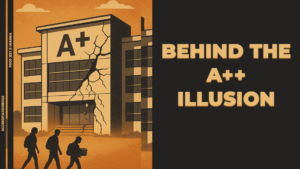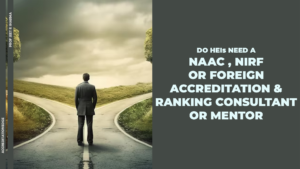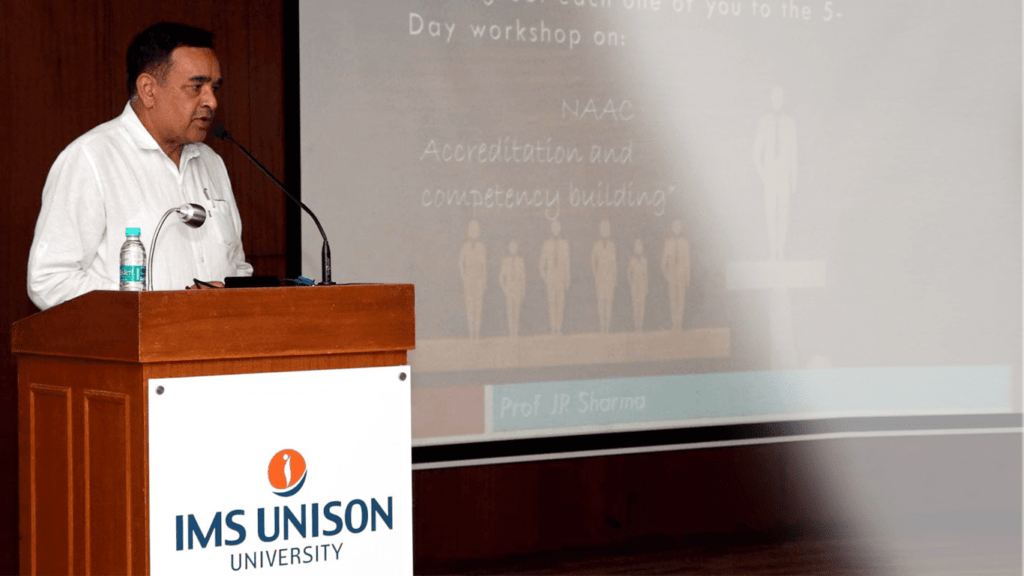Our consultants are experts in the quantitative and qualitative metrics and have answers to every expectation from the HEIs. The fact that Prof Sharma, holds an incredible experience of having personally guided faculty of over 82 HEIs across India in NAAC accreditation, self-speaks for his credentials.
Team AccreditationEdge, however cautions that institutes “MUST NOT” go for the NAAC accreditation without full advanced preparations.
It is recommended that institutes’ Steering Committee must read NAAC Manual and SSR, understand what is required of institute and carryout a gap analysis. It always pays to get an academic audit done by incorporating an external expert and fix timelines to make up deficiencies before taking a decision to go for NAAC accreditation. Once accredited, the grading so scored shall stick to the institute for the next 5 years with an extraordinary effect on its brand and public perception. Not just that, the next grading and grading of even NBA accreditation in various programs shall accordingly get impacted too, as perception of an institute is a major determining factor. It is not quite easy to erase a quality mark stamped on an institute. You must therefore, not just attempt or take a plunge into NAAC accreditation, but instead go for it, only once you are sure that you shall come out of it with flying colors.
“If there a big hole in Institute’s readiness, baby steps won’t do. You would require a top-class NAAC consultant to render a long-term consultancy at your campus. If your institute is in Bangalore, you are immensely fortunate. You have in AccreditationEdge” a top NAAC Consultant in Bangalore, itself”.
5-PRE-REQUISITES FOR THE INSTITUTE’S NAAC TEAM
- Be passionate, and believe in your abilities of “WE CAN-WE SHALL” attain the set goal.
- Cross the road, come out of your comfort zone, set higher targets, enhance your
- outreach and connect with the industry on various critical enablers.
- Commit individually on NAAC preparations, at least an hour daily, till the Peer team visit.
- As precursor to preparation, hold IQAC review meeting, once weekly and monitor.
- Think and think of credibly building data, backed by supporting documents.
Preliminary Phase - 1
2 months
- Appointing criteria owners and SPOCs
- Readiness Audit & Diagnostic study of gaps
- Arriving at KPIs for A++
- Setting targets for faculty and staff
- Writing Policies, Processes, SOPs, Perspective Plan
- Minutes of Meetings as per DVV mandate
- Preparing a manual of OBE implementation records of max programs for at least 1 previous batch and current academic year batch.
- AQARs submission with an eye on SSR (if applicable)
- Review website and also create menu for NAAC
Review Phase - 2
2 months
- DVV data templates completion of all criteria on the Excel Sheet
- Developing supporting documents to map DVV SOP requirement
- Review of detailed progress on the set KPIs and targets as part of monthly IQAC meeting.
- Writing of Qualitative metrics, Best Practices, and Distinctiveness.
- Writing of Executive Summary and Basic Data
- Projecting demands for, ERP, ICT/IT/Library, Infra enhancement to the Management
- Writing of Extended Profile
Review Phase - 3
2 months
Review of progress on critical metrics with emphasis on research, consultancy, innovation, patents, green/energy audits, ERP, OBE, best practices, once
weeklyUploading all DVV templates data/supporting documents of SSR with a link on the SSR
Preparations for the Students’ Survey.
IIQA
Final Review of supporting documents by IQAC with
each criterion owner and SPOC
Final Phase - 4
2 months
Final Audit by an Expert and assessment of a likely Grade
Submission of IIQA
Continuously keep improving supporting documents of qualitative metrics, not submitted with SSR till inspection
Uploading data and students’ survey data on the portal
Giving final touch to aspects of conducting peer team visit
Preparing PPTs by all concerned for the Peer team and preferably go for a Mock Peer team inspection.
Demonstrating well to the Peer team of what is stated in the qualitative metrics.
KEY THOUGHTS FOR THE ULTIMATE SUCCESS
- Deans and HODs must believe in success and lead from the front with VC providing
all the inspiration and mentoring. - Start very early to build capacity and competence on each metric. You can never
succeed by opening the SSR and its metrics just a few months before applying for
the NAAC. - In qualitative metrics write only what you have and what you can demonstrate on
the ground. - Accept very high targets for research publications and projects5. Hire faculty with Ph.D. and high Research Credentials and they would drive Central
Research Lab, Ph.D. admissions, Publications, Projects, Patents, and writing content
for the SWAYAM courses. Retain them with a sound retention policy. Inspire young
promising faculty to do Ph.D. and create an eco-system for their research. - Spend on ICT, IT, Exam Reforms, Library, and Learning Resources.
- There is no better substitute than going the ethical way.











